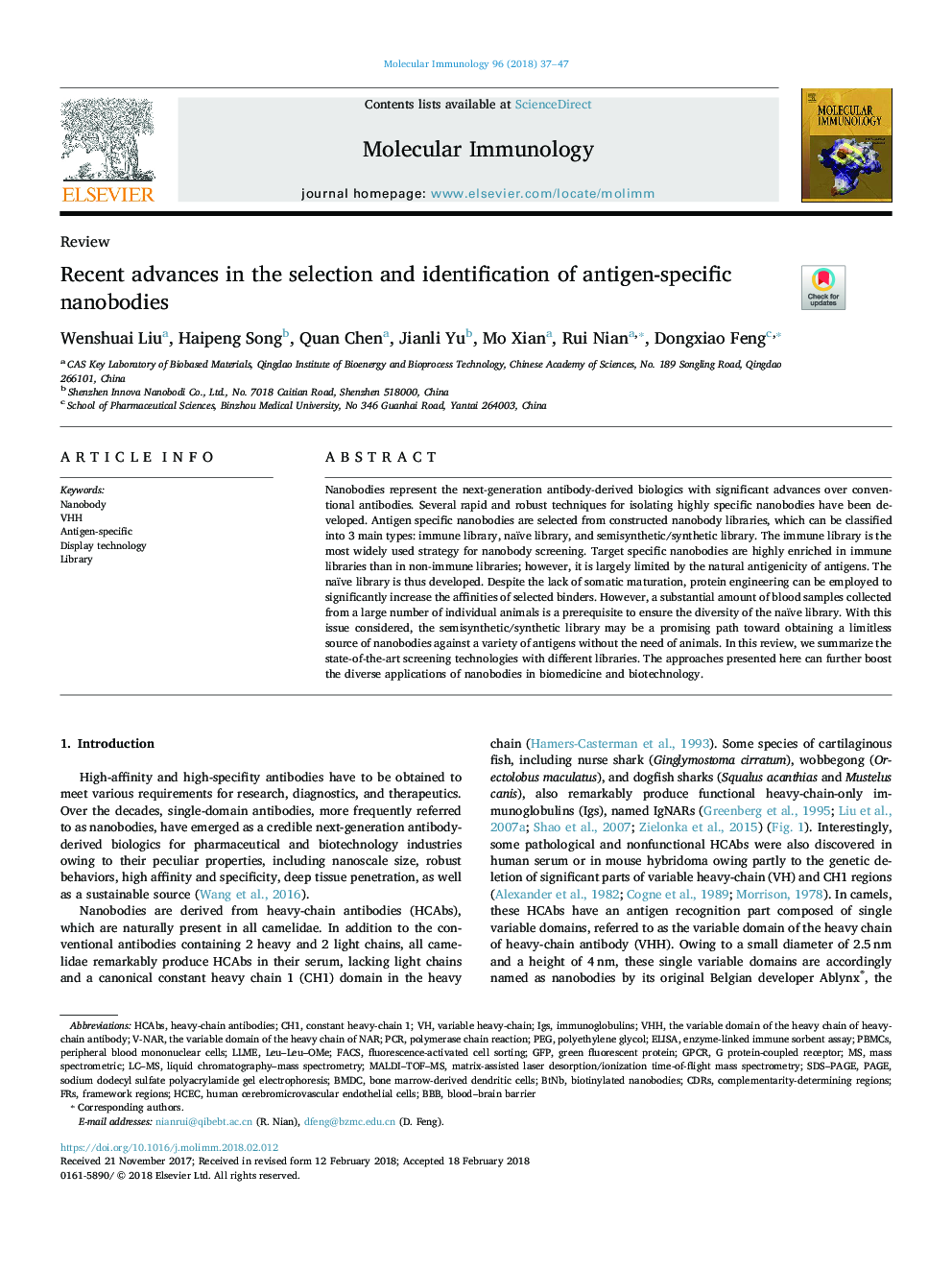| Article ID | Journal | Published Year | Pages | File Type |
|---|---|---|---|---|
| 8648546 | Molecular Immunology | 2018 | 11 Pages |
Abstract
Nanobodies represent the next-generation antibody-derived biologics with significant advances over conventional antibodies. Several rapid and robust techniques for isolating highly specific nanobodies have been developed. Antigen specific nanobodies are selected from constructed nanobody libraries, which can be classified into 3 main types: immune library, naïve library, and semisynthetic/synthetic library. The immune library is the most widely used strategy for nanobody screening. Target specific nanobodies are highly enriched in immune libraries than in non-immune libraries; however, it is largely limited by the natural antigenicity of antigens. The naïve library is thus developed. Despite the lack of somatic maturation, protein engineering can be employed to significantly increase the affinities of selected binders. However, a substantial amount of blood samples collected from a large number of individual animals is a prerequisite to ensure the diversity of the naïve library. With this issue considered, the semisynthetic/synthetic library may be a promising path toward obtaining a limitless source of nanobodies against a variety of antigens without the need of animals. In this review, we summarize the state-of-the-art screening technologies with different libraries. The approaches presented here can further boost the diverse applications of nanobodies in biomedicine and biotechnology.
Keywords
CDRsIGSBMDCLLMEVHHGPCRMALDI–TOF–MSGFPCH1FRSPBMCsHcAbsFACSHCECLC–MSSDS–PAGEenzyme-linked immune sorbent assayheavy-chain antibodiesAntigen-specificMass spectrometricmatrix-assisted laser desorption/ionization time-of-flight mass spectrometryimmunoglobulinsELISADisplay technologyfluorescence-activated cell sortingBlood–brain barrierBBBperipheral blood mononuclear cellsBone marrow-derived dendritic cellsliquid chromatography–mass spectrometryComplementarity-determining regionsframework regionsNanobodypolymerase chain reactionPCRgreen fluorescent proteinpolyethylene glycolPEGLibraryG protein-coupled receptor
Related Topics
Life Sciences
Biochemistry, Genetics and Molecular Biology
Molecular Biology
Authors
Wenshuai Liu, Haipeng Song, Quan Chen, Jianli Yu, Mo Xian, Rui Nian, Dongxiao Feng,
